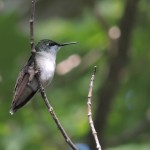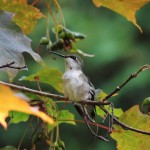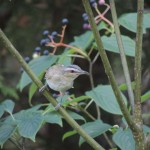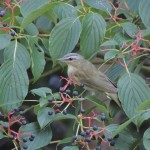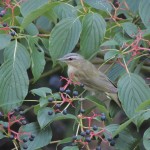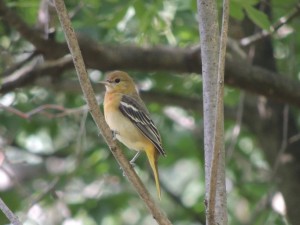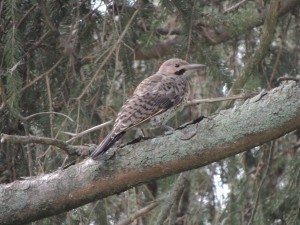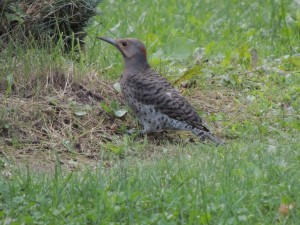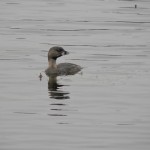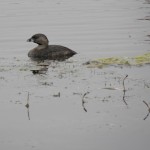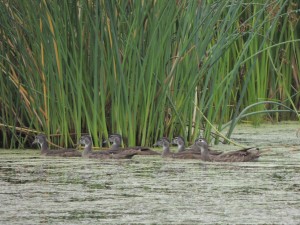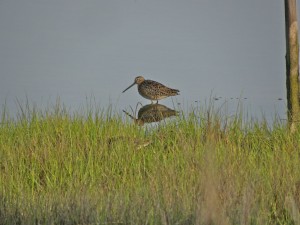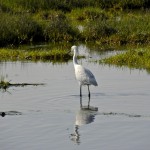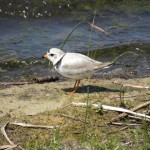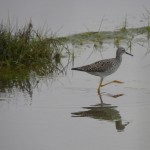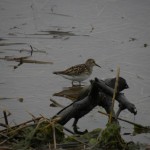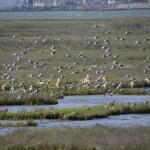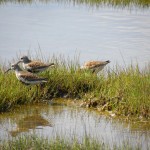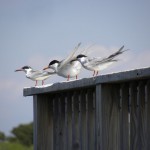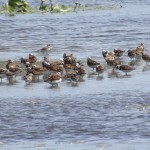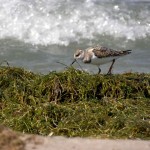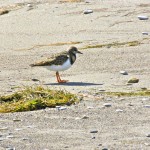19 – 21 August 2013, Haliburton ON. I’m writing this to the background of a Red-eyed Vireo singing in the forest canopy above. I think it’s late in the year for bird song, but for reasons best known to the vireos at least some of them are still tracing calls through the late summer air.
We are privileged to be enjoying a few days at some friends’ summer cottage on the shore of a beautiful northern lake. Ontario has thousands of square miles of lakes and forest country, most of it inaccessible. But a few hundred square miles of such countryside all within a three or four hour drive from our major urban areas is known affectionately as Up North, cottage country. It’s a countryside of often heart-stopping beauty, dramatic rounded hills clothed in forests of maples, birch, oak, aspen and beech punctuated by bold evergreens and interlaced with glassy reflecting lakes. At any time of year it is, as my cousin put it, superb.
The bird life here is captivating if not hugely diverse. I’ve noted about 20 species in the couple of days we’ve been here: I’ve heard Common Ravens rolling their hollow croaks, a Pileated Woodpecker’s laugh, round and ringing, and now a Blue Jay or two are shrieking to each other some way off to the right.
But the signature bird sounds of this cottage are the buzzing flights of Ruby-throated Hummingbirds, like the thumb-flipped pages of a book, and the occasional two and three syllable phrases of Red-eyed Vireos.
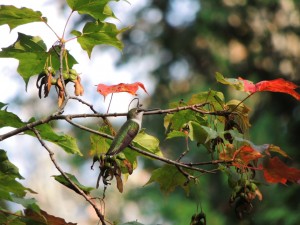
Both species hang around faithfully all day. The hummingbirds come to an overhead feeder for a sip of syrup every three or four minutes. There’s at least three birds and I’m not sure whether they love or hate each other. Presumably they are related, young siblings perhaps, but whatever their connection there’s never more than one at the feeder even though you’d think there’s plenty of room at for a dozen or more. They don’t tolerate interlopers and there always seems to be one that wants to muscle in on another’s nectar stop, so we watch little high-speed hummingbird dramas, chaser and chased, They chase and weave like mini Star Wars fighters, one lightning strike following the other barely centimeters behind, swerving and careening in tight-turning arcs, zipping through glimpses of daylight between overlapping branches with microns to spare. And yet for all of that rarely does the chase last more than three or four seconds when all is forgiven until the next trespass.
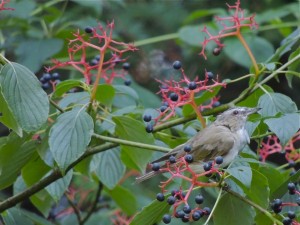 Half a dozen times an hour, a couple of young Red-eyed Vireos emerge from the security of a thick cedar hedge to gulp ripe berries from the scarlet panicles of an Alternate-leaved Dogwood. They don’t stay long, a handful of mouthfuls then they dash back into cover. Their priorities are: Not fall prey to a hungry Sharp-shinned Hawk; Build up muscle mass and fat reserves and; Complete growth of flight and body feathers. Their eyes show a brownish rather than red iris, which I believe indicates they are juvenile birds. One of them is still quite rough looking as it finishes growing its flight and body feathers that must take it through the next six to eight months. In the picture you can see that some of its head feathers are still emerging and its greater and lesser coverts (wings feathers) have not yet grown in evenly.
Half a dozen times an hour, a couple of young Red-eyed Vireos emerge from the security of a thick cedar hedge to gulp ripe berries from the scarlet panicles of an Alternate-leaved Dogwood. They don’t stay long, a handful of mouthfuls then they dash back into cover. Their priorities are: Not fall prey to a hungry Sharp-shinned Hawk; Build up muscle mass and fat reserves and; Complete growth of flight and body feathers. Their eyes show a brownish rather than red iris, which I believe indicates they are juvenile birds. One of them is still quite rough looking as it finishes growing its flight and body feathers that must take it through the next six to eight months. In the picture you can see that some of its head feathers are still emerging and its greater and lesser coverts (wings feathers) have not yet grown in evenly.
The pleasure of watching the hummingbirds and vireos, learning and anticipating their routines and trying for the perfect photo made any ambitions for finding more species irrelevant. I have my book, my coffee and my birds of the days right in front of me.
Slideshow pictures above of the vireos and hummingbirds are only visible if you’re logged onto the my Bird of the Day site, not if you’re reading this as an email.

